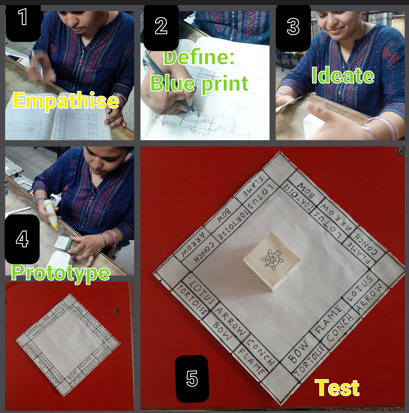ABCs of design thinking and need for education and training in it
- Lalit Kishore
- Aug 25
- 2 min read

ABCs of design thinking and need for education and training in it
Design thinking is the modern age thinking in which knowledge and technology is getting updated at a fast rate while practical use throws up the new challenges which can be met with only with relevant thinking skill. These days cognitive psychologists and positive sociologists are talking about design thinking skill education and training to deal with emergent problems. The stress is on co-evolving solutions with the emergent problems.
Design thinking is a mental process or cognitive activity for creative problem solving or solution by an individual or a team through better products, services, and internal processes.
It combines critical, lateral, creative, creative, divergent, out-of-box thinking processes to diagnose the problem and create multiple solutions. Thereafter convergent thinking in terms design and strategic thinking starts to work out the best practical solution to the diagnosed contextual problem or innovate.
For intervention and service designers, innovation and solution providing design thinking is preferred, on the other hand, for product creation or improvement the thinking process is combined with practicality and strategic thinking.
Here are the ABCs of design thinking.
The design thinking is the cognitive activity that (is)...
A: Associated with innovating for problem mitigating or problem free products and services
B: Based on out-of-box thinking and deductive reasoning
C: Consists of solution-focused thinking and cognitive strategies and problems are seen as opportunities and challenges to mobilize design thinking
D: Divergent thinking and brainstorming are helpful to explore possibilities
E: Evolutionary cognitive process that makes use of sketches, drawing, assembly, quick trials, fine tuning and prototypes
"Design thinking is a human-centered, iterative process used for creative problem-solving and innovation. Rather than focusing on a problem's surface, it seeks a deep, empathetic understanding of users' needs to challenge assumptions and create innovative, impactful solutions.Such verses are good for constructing the defining of the terms and concepts related to life and knowledge," states a Google AI overview. The five-step design thinking model (Empathize, Define, Ideate, Prototype, Test) is said be propagated wi Hasso Plattner Institute of Design at Stanford University
The following collage shows the five-step design thinking in preparing a board game for primary school kids




Comments